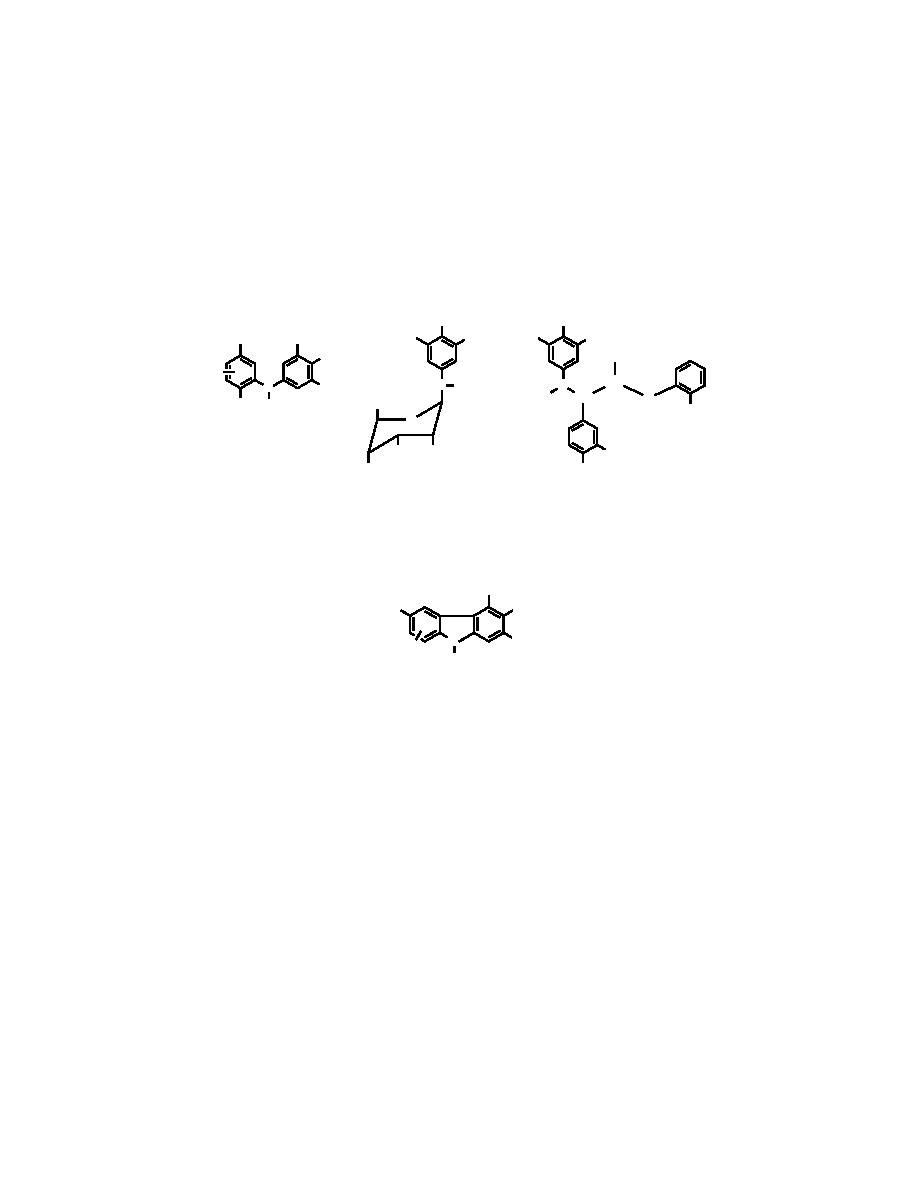
2,4DANT in the solid state is 57.7 ppm. The spectrum of the blank root sample consists of a broad peak at
117.9 ppm. This comprises the naturally abundant 15N nuclei in the root, and corresponds to the second-
ary amide nitrogens of amino acids in peptide structures. The spectrum of the root from kenaf treated
with 2,4DANT exhibits this secondary amide peak as well as a major peak at 71 ppm. Direct, unequivocal
evidence for incorporation of 2,4DANT into the biochemical constituents of the root tissue is absent. This
is in contrast to spectra of the reduced TNT amines reacted with soil humic acid, in which case evidence
for condensation of the amines with carbonyl groups was definitive (Thorn 1998). However, some subtle
features of the spectrum may be interpreted as evidence for condensation of the 2,4DANT with biochem-
ical constituents. Compared to the spectrum of the 2,4DANT standard, the major peak of the root spec-
trum is broader, and the maximum shifted downfield to 71 ppm. The downfield shift and broadening
would be consistent with formation of aminohydroquinone, glycosidic, or arylamino linkages.
CH3
CH3
O2N
NH2
O2N
NH2
OH
NO2
CH2OH
CH3
*
R
*
CH
*
N H
N
N
NH2
H
CH
O
CH2OR
OH
H
R
O
OH
OH
OCH3
OH
OH
The latter structure is the 2,4DANT analog of the reported condensation product resulting from the
peroxidase catalyzed reaction of aniline with conniferyl alcohol, a precursor to lignin (Lange et al. 1998).
Vertical expansion of the spectrum also reveals that the downfield peak centered at 117.9 ppm extends to
about 170 ppm. It is possible that 2,4DANT covalently bound in the form of heterocyclic structures such
as indoles, pyrroles, or carbazoles overlaps with the naturally occurring amide nitrogens in the root
tissue.
NO
2
CH3
HO
N
NH2
R
H
*
Spectra of roots from kenaf grown with the labeled 4ADNT and 2,6DANT (not shown) also exhibited
broadening and downfield shifts from their respective 4ADNT and 2,6DANT standards, showing possi-
ble evidence for aminohydroquinone, glycosidic, or arylamino linkages.
10





 Previous Page
Previous Page
